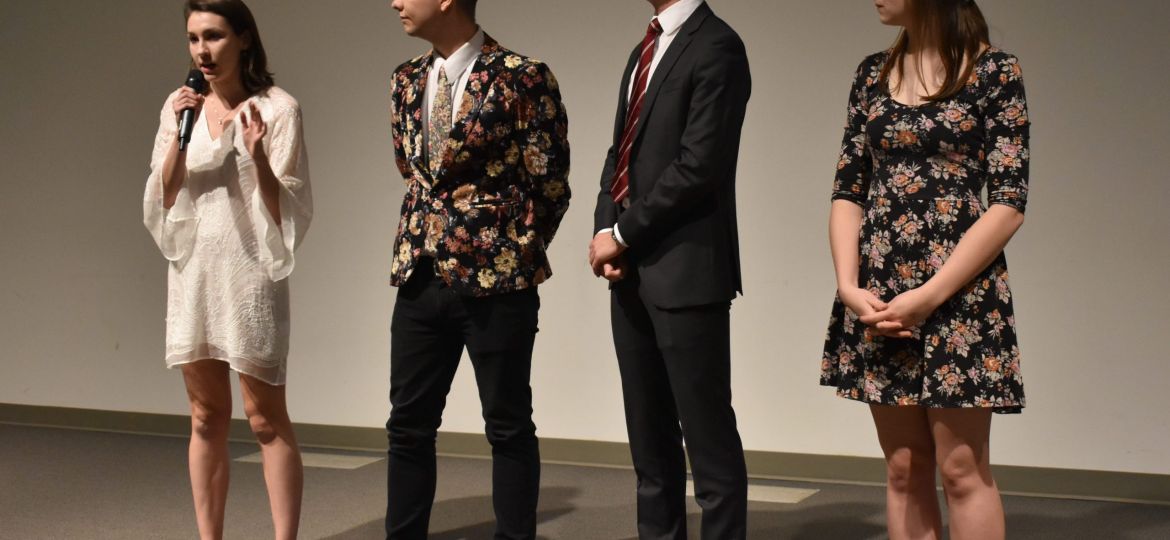
25 days. That’s how long the Media and The Environment class had to write, shoot and produce four mini-documentaries that detailed the impact of climate change on Iceland. The result? A range of shorts that informed and inspired the audience to examine their role in climate change and their responsibility as an international traveler.
Led by Director of Film Studies Linda Mokdad and English professor Bjorn Nordfjord, the class spent the month of June travelling through Iceland, talking with locals and environmental experts to hear their concerns about the ever-changing climate. The final projects were screened in Tomson Hall on Thursday, Oct. 19 to a full auditorium.
The first film was produced by Chaz Mayo ’18, Henry Miller ’20, Samantha Roback ’19 and Kathryn York ’19 and called “What We Live On.” In ten minutes, the group introduced us to two characters: Filipp, a young, humble sheep farmer and Páll, an abrasive yet endearing fisherman. Both characters relied heavily on the land for their livelihoods, and both are at risk of losing their jobs if climate change continues. What I appreciated most about “What We Live On” was that it was character-driven, and because I was invested in the lives of Filipp and Páll, I was motivated to do something about climate change. The film was interview heavy and the editing could have been smoother, but the choppy transitions and commentary from the cameraperson made the entire film more human, adding to its appeal.
While “What We Live On” was character driven, the second film, “Ferdamadur,” produced by Ali Griffin ’20, Kierra Lopac ’19, Leni McAlister ’18 and Xandi Swedberg ’19, took a more big picture approach. The film focused on the impact of the tourism industry on Iceland’s cities and landscapes. The unanimous conclusion was this: the influx in careless tourists is damaging to the land, and the country does not have the infrastructure to accommodate and control the swell in tourists. While the message was clear, I wasn’t motivated to really do anything about the issue. The interviews portrayed the locals as crotchety and I felt as though the only way I could help was to not visit the country, period.
Johnny Goodson ’20, Cookie Imperial ’19, Erika Malpass ’19 and Suzanna Liddle ’18 produced by far the most educational film, titled “The Canary in the Coal Mine.” The film detailed the impact of climate change on one of Iceland’s greatest natural wonders: glaciers. The interviews and careful selection of information made the piece extremely informative. My only critique is that the producers made incredibly safe editing choices, and if the film had been any longer it could run the risk of being too dry.
The last film was my favorite. It was produced by Jack Schoephoerster ’19, Kelsey Halverson ’20, Hannah Martens ’20 and Sam Carlson ’19 and titled “Gluggavedur” – Icelandic for “window weather.” The editing gave the film an experimental feel, and Carlsen wrote the music to go along with the film. Near the middle of the film, the picture jumped back and forth between shots of tourists and empty landscape to the rhythm of a chaotic piano soundtrack. It was all very stressful, but I’m pretty sure that was the filmmakers’ intention. Also, I was a sucker for the ending, in which the filmmakers interviewed other members of their class about why they were motivated to make documentaries about climate change. The uplifting music, hopeful message and familiar faces in the B-roll left me feeling pretty inspired about the entire project.

